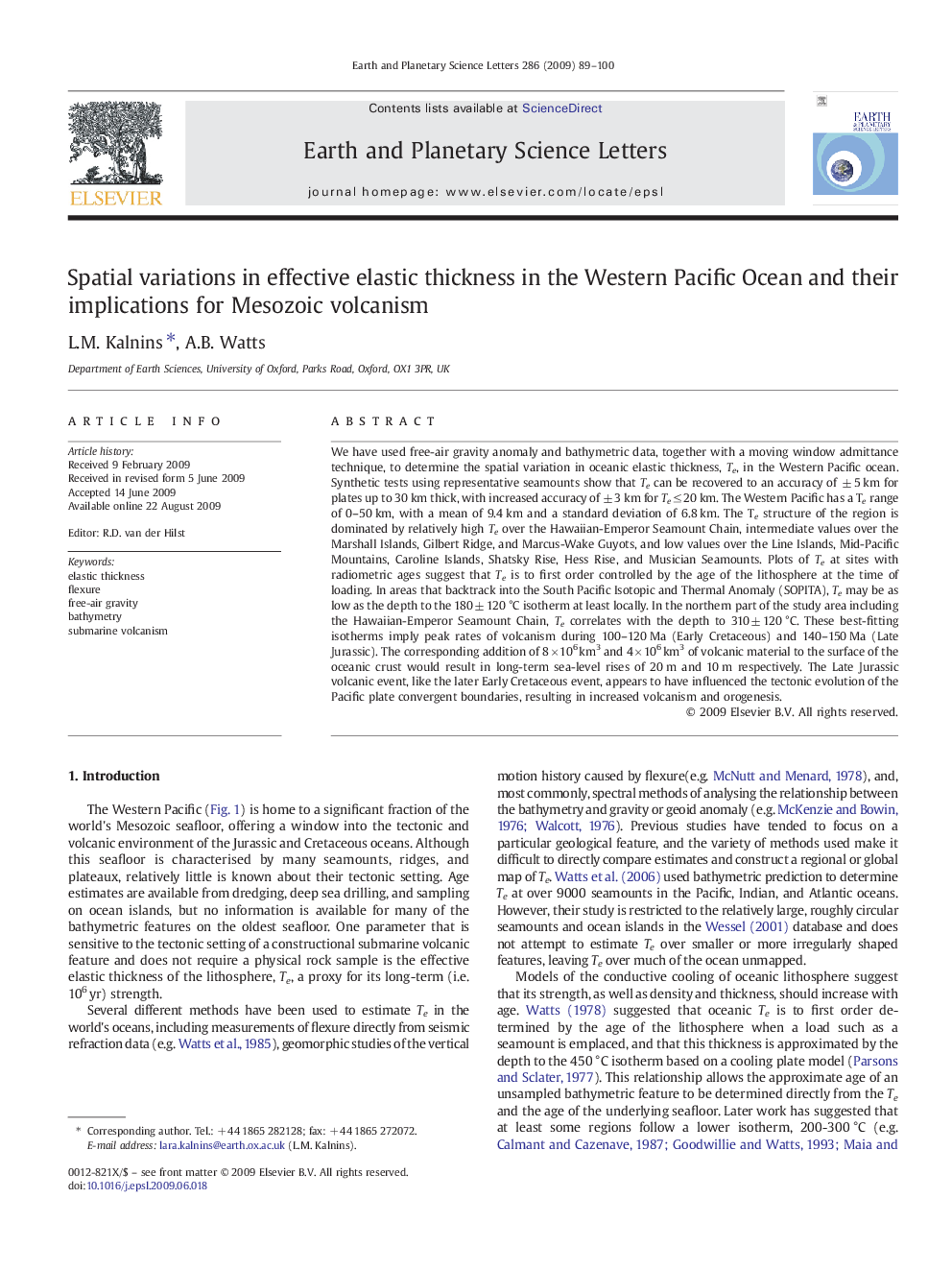| کد مقاله | کد نشریه | سال انتشار | مقاله انگلیسی | نسخه تمام متن |
|---|---|---|---|---|
| 4678871 | 1634867 | 2009 | 12 صفحه PDF | دانلود رایگان |

We have used free-air gravity anomaly and bathymetric data, together with a moving window admittance technique, to determine the spatial variation in oceanic elastic thickness, Te, in the Western Pacific ocean. Synthetic tests using representative seamounts show that Te can be recovered to an accuracy of ± 5 km for plates up to 30 km thick, with increased accuracy of ± 3 km for Te ≤ 20 km. The Western Pacific has a Te range of 0–50 km, with a mean of 9.4 km and a standard deviation of 6.8 km. The Te structure of the region is dominated by relatively high Te over the Hawaiian-Emperor Seamount Chain, intermediate values over the Marshall Islands, Gilbert Ridge, and Marcus-Wake Guyots, and low values over the Line Islands, Mid-Pacific Mountains, Caroline Islands, Shatsky Rise, Hess Rise, and Musician Seamounts. Plots of Te at sites with radiometric ages suggest that Te is to first order controlled by the age of the lithosphere at the time of loading. In areas that backtrack into the South Pacific Isotopic and Thermal Anomaly (SOPITA), Te may be as low as the depth to the 180 ± 120 °C isotherm at least locally. In the northern part of the study area including the Hawaiian-Emperor Seamount Chain, Te correlates with the depth to 310 ± 120 °C. These best-fitting isotherms imply peak rates of volcanism during 100–120 Ma (Early Cretaceous) and 140–150 Ma (Late Jurassic). The corresponding addition of 8 × 106 km3 and 4 × 106 km3 of volcanic material to the surface of the oceanic crust would result in long-term sea-level rises of 20 m and 10 m respectively. The Late Jurassic volcanic event, like the later Early Cretaceous event, appears to have influenced the tectonic evolution of the Pacific plate convergent boundaries, resulting in increased volcanism and orogenesis.
Journal: Earth and Planetary Science Letters - Volume 286, Issues 1–2, 30 August 2009, Pages 89–100